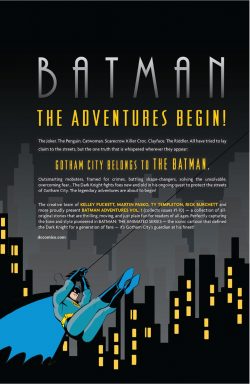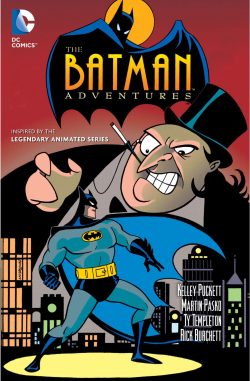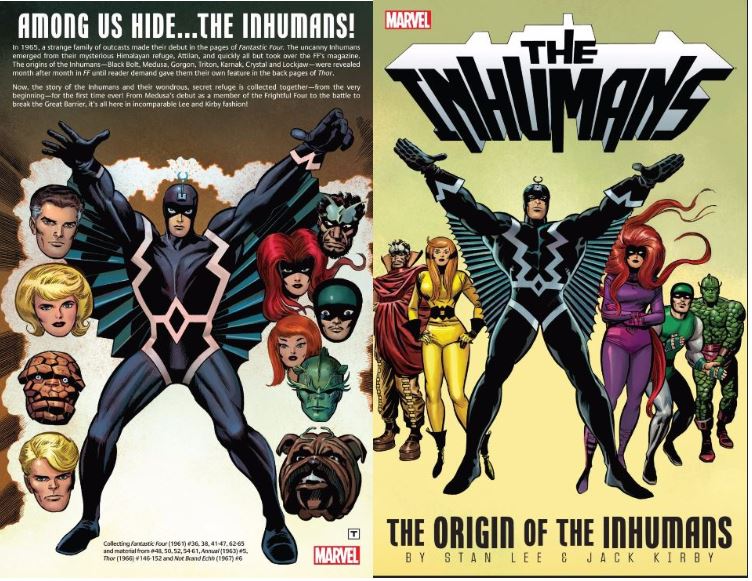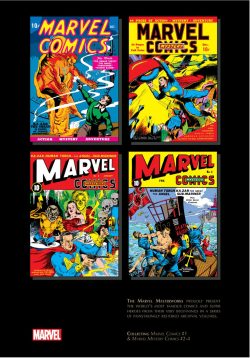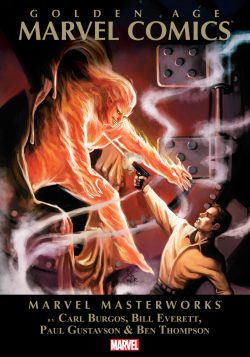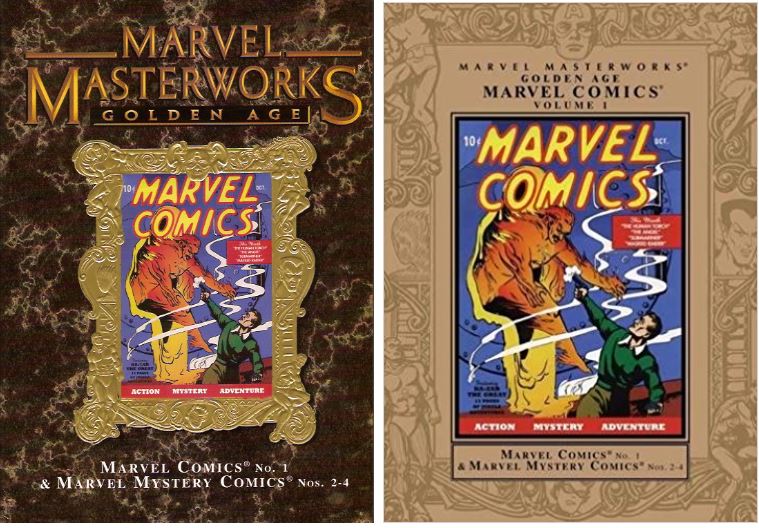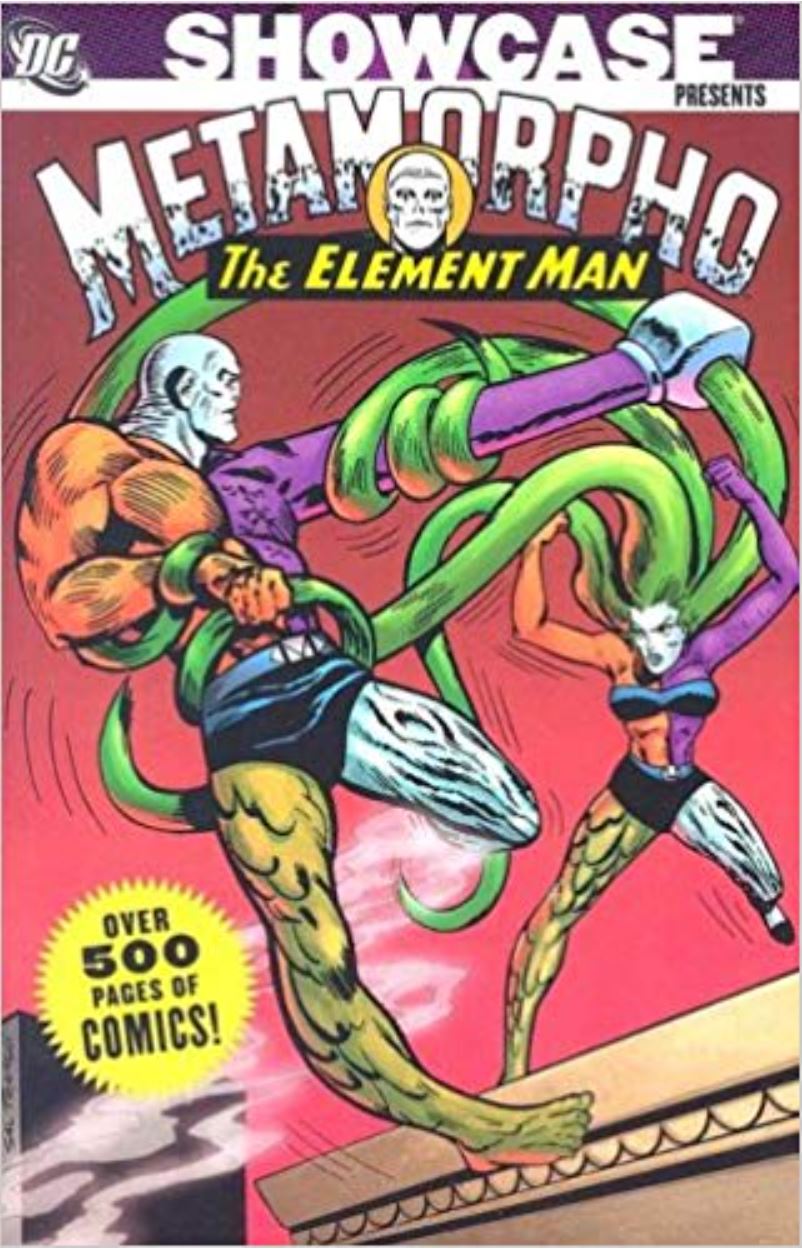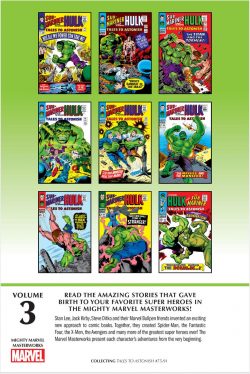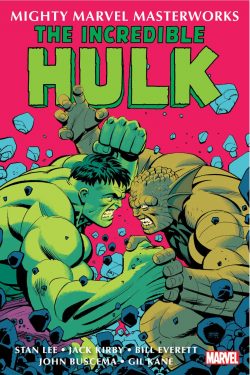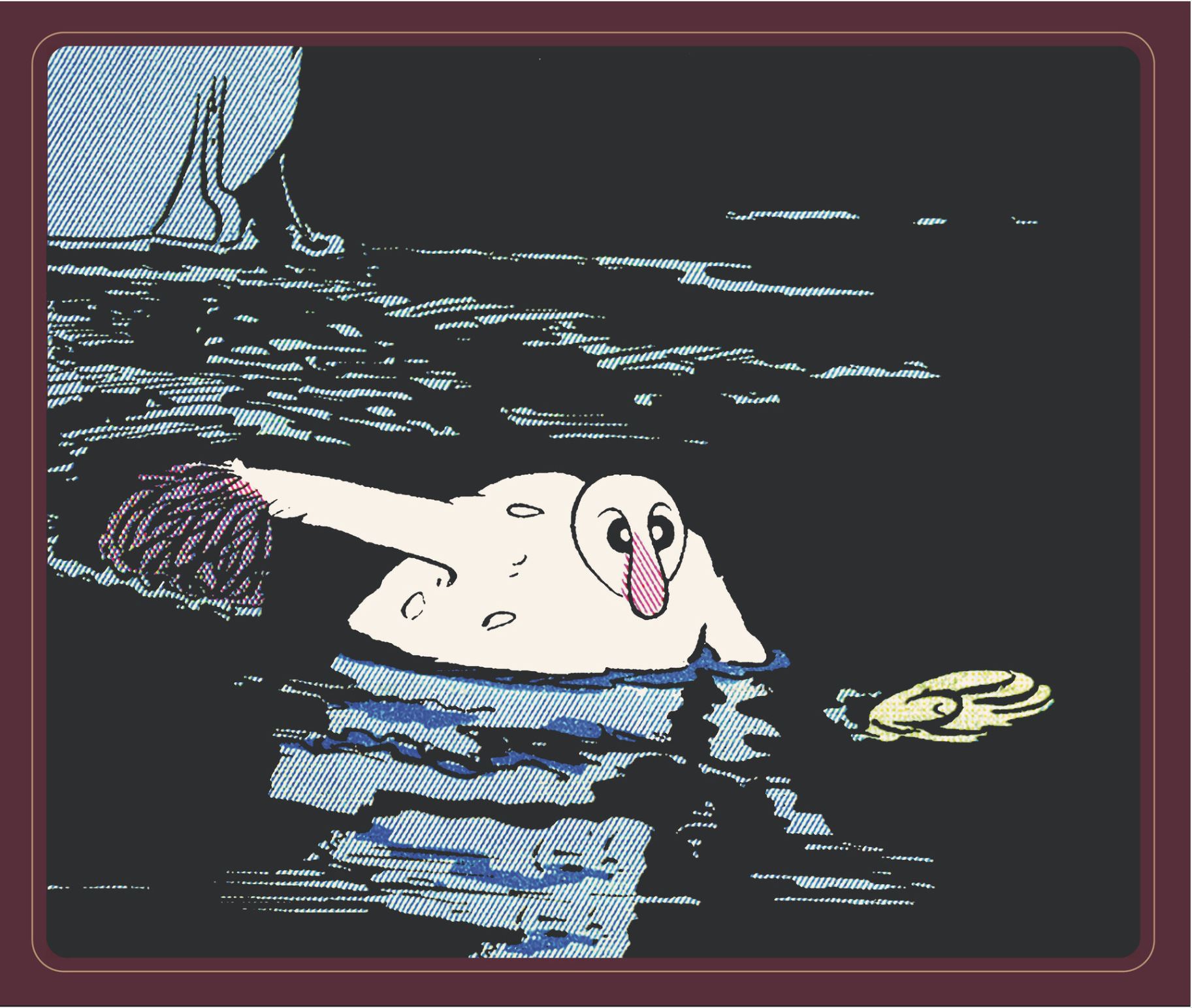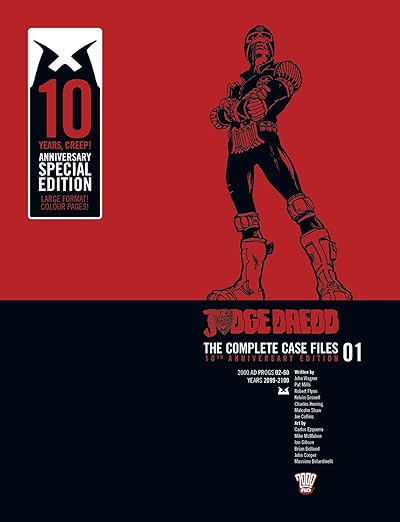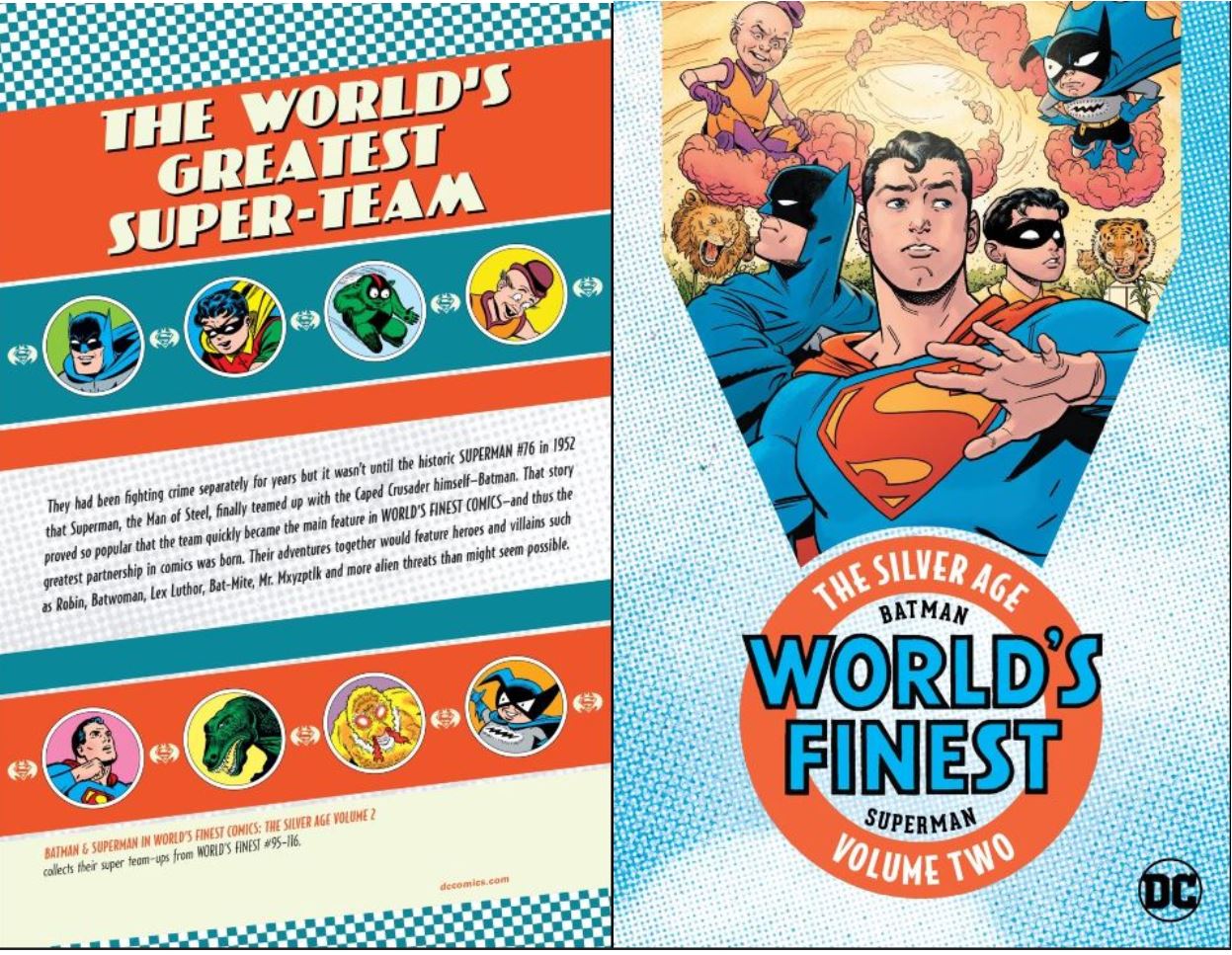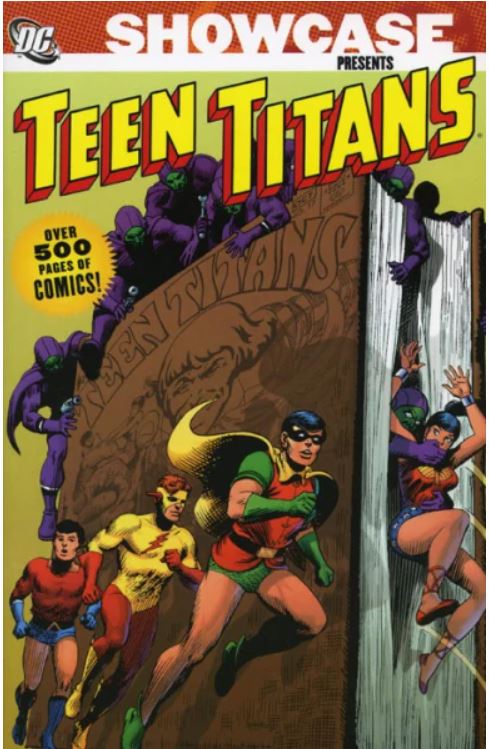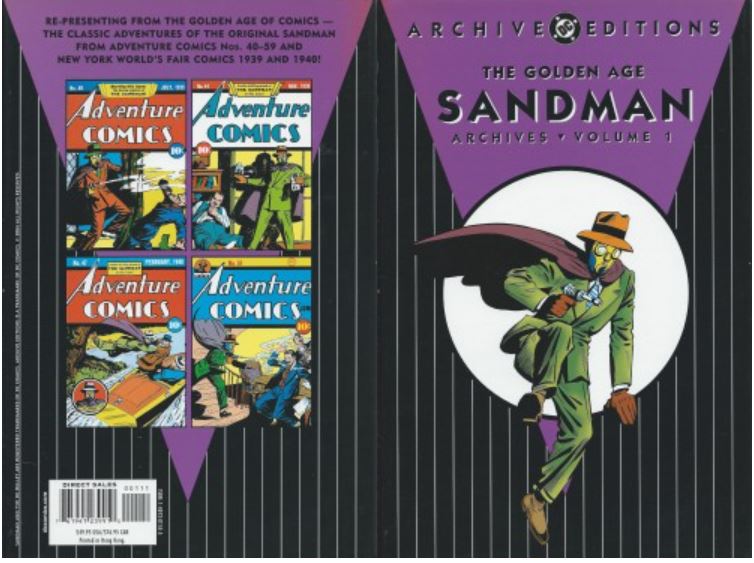
By Bert Christman, Gardner F. Fox, Creig Flessel, Chad Grothkopf, Ogden Whitney & various (DC Comics)
ISBN: 978-1-4012-0155-5 (HB)
Probably illustrated, scripted and created by multi-talented all-rounder Bert Christman (with the assistance of young scripting star Gardner F. Fox), The Sandman premiered in either Adventure Comics #40 July 1939 (two months after Batman’s debut in Detective Comics #27) or two weeks earlier in New York World’s Fair Comics 1939 – depending on whose distribution records you choose to believe. Intriguingly, the Dark Knight didn’t make the cut for the legendary commemorative comic book and only appeared in New York World’s Fair Comics #2 in Summer 1940…
Head obscured by a gas-mask and slouch hat; caped, business-suited millionaire adventurer Wesley Dodds was cut from the radio drama/pulp fiction mystery-man mould that had made The Shadow, Green Hornet, Lone Ranger, Phantom Detective, Black Bat, Spider, Avenger and so many more into household names of early mass-entertainment and periodical publication. Wielding a sleeping-gas gun and haunting the night to hunt a host of killers, crooks and spies, he was eventually joined and accompanied by plucky paramour Dian Belmont, before gradually losing readers’ interest and slipping from cover-spot to last feature in Adventure Comics, just as the shadowy, morally ambiguous avengers he emulated slipped from popularity in favour of more flamboyant, true-blue fictional fare.
This splendidly sturdy, moodily atmospheric Archive edition gathers those landmark early appearances from New York World’s Fair Comics 1939 & 1940 and the rip-roaring exploits from Adventure Comics #40-59, spanning July 1939 to February 1941: a period when Detective Comics Incorporated frantically sought to follow up Superman and Batman with the “Next Big Thing in comic books”…
Following an erudite appreciation from historian and comics all-star Jim Amash, the dramas begin with the fast-paced thriller from the groundbreaking, pioneering comics premium New York World’s Fair Comics #1 as Christman & Fox introduced ‘Sandman at the World’s Fair’. In those long-lost days, origins and back story were not as important as action and spectacle so we quickly plunge into a fast-paced yarn as wealthy, rugged playboy scientist Dodds visits the global festival with plans for a new ray-gun. En route he encounters spies and a traitor within his own company. Already active as The Sandman – and sought by the cops for it – the vigilante tracks down and deals with the pre-war enemies of America…
Over in Adventure Comics #40, at about the same time, the cover-featured crusader saves kidnapped actress Vivian Dale when ‘The Tarantula Strikes’ (Christman & Fox) in a rousing romp reminiscent of the High Society hi-jinks of movie marvels The Saint, Falcon or Lone Wolf: prowling allies and moonlit rooftops, breaking into criminals’ lairs, rifling safes and dealing as much death as dream gas. He also utilised a unique calling card, sprinkling sand to proclaim and terrify wherever he has silently been and gone…
Christman wrote and drew many of the early thrillers such as #41’s ‘On the Waterfront’, wherein plucky reporter Janice Blue inadvertently stumbles into a dockside narcotics ring just as murderous seadog Captain Wing makes a fateful takeover bid. Luckily for Janice, the stealthy Sandman is already on the case…
Adventure #42 highlighted Christman’s love of aviation in ‘The Three Sandmen’, as Dodds met up with former Navy Flying Corps buddies to solve a string of murders. Somebody was rubbing out all the members of the old squadron…
Allen Bert Christman first came to public attention by following near-mythic Noel Sickles on seminal newspaper strip Scorchy Smith. A dedicated patriot and flyer, Christman entered the Naval Air School in 1940 and joined Claire Lee Chennault’s 1st American Volunteer Group, known as the legendary fighter squadron The Flying Tigers. These volunteers began fighting the Japanese in China long before America officially entered WWII on December 8th 1941, and Christman – officially designated a Colonel in the Chinese Air Force – used his artistic talents to personalise and decorate many of the planes in his Flight. He was shot down and died in horrific circumstances on January 23rd 1942.
Issue #43 saw his last official story as Dodds went on a South Seas flying vacation and was embroiled in an ‘Island Uprising’: spectacularly saving embattled white pearl hunters from natives enraged to fury by latter-day pirate Red Hatch…
In Adventure #44 (November 1939), Fox & Creig Flessel stepped into the breach left by Christman when ‘The Sandman Meets the Face’. Here the playboy was back in civilisation and aiding a down-&-out friend against a mercurial disguise artist and mob boss terrorising the city. This splendid blood-&-thunder caper also saw the page count rise from 6 to 10 as The Sandman finally found his lurking, moody metier…
‘The Golden Gusher’ (#45 by Fox & Flessel) was nightclub singer Gloria Gordon, threatened with kidnap or worse until the Master of Sleep intervened, whilst #46’s ‘The Sandman Meets with Murder’ saw rising talent Ogden Whitney step into the artistic hot seat when the slaying of another old Dodds chum led into a deliciously convoluted murder-mystery involving beautiful twins, counterfeiting and a macabre cross-dressing killer…
A huge step in continuity occurred in #47 as District Attorney Belmont agreed to an unofficial truce with The Sandman following the assassination of a prominent banker. Simultaneously, Wesley caught a wily thief trying to crack his safe and became unwilling partner to the ‘Lady in Evening Clothes’ (Fox & Whitney) after she uncovered his secret identity. A celebrated cat-burglar, the sophisticated she-devil was plagued by not knowing who her parents were, but happily went straight(ish) in return for Dodd’s pledge to help her…
Eventually revealed as long-lost Dian Belmont, she became a regular cast addition in #48 as ‘Death to the D.A.’ found her newly-found father under threat from gangsters and far less obvious killers on a palatial island retreat, after which ‘Common Cold – Uncommon Crime’ (#49 by Fox, Flessel & perhaps Chad Grothkopf on inks) sees the mystery-man tracking killers who were eradicating scientists who refused to hand over their cure for one of our most unforgiving ailments.
With a year gone by and global war looming, the “World of Tomorrow” exhibition was slowly closing, but there was still time for New York World’s Fair Comics #2, where this time ‘Sandman Goes to the World’s Fair’ (by Fox & Grothkopf) delivered a blistering crime caper as Wesley and Dian are stuck babysitting her maiden Aunt Agatha around the Fair and targeted by ambitious but exceedingly unwise kidnapper Slugger Slade…
In Adventure Comics #50 ‘Tuffy and Limpy’s Revenge Plot’ – by Fox & Flessel – covered similar ground as a murderous campaign of apparently unrelated deaths points to another scheme to remove the dauntless DA, drawing Sandman and Dian into a blockbusting battle against ruthless rogues, whilst #51’s (June 1940, by Fox & Flessel and previously reprinted elsewhere as ‘The Pawn Broker’) ‘The Van Leew Emeralds’ provided a fascinating mystery romp for the romantically inclined crimebusters to solve in fine style and double-quick time.
A burglary at the Belmont residence only netted a pair of gloves in #52’s ‘Wanted! Dead or Alive’, but inexorably led to a perplexing scavenger hunt with sinister overtones and a deadly pay-off when scandalous Claudia Norgan framed her best gal-pal Dian for the Amber Apple Gang‘s crimes, after which in #53, ‘The Loan Sharks’ unwisely aroused the dynamic dream-maker’s ire after graduating from simple leg-breaking to murder to enforce their demands. They almost ended the Sandman too before he finally got the better of them…
Adventure #54’s ‘The Case of the Kidnapped Heiress’ saw Wes and Dian witness a bold snatch-&-grab, but their frenzied pursuit only resulted in both the DA’s daughter and millionairess Nana Martin being abducted together. Fury-filled and frantic, Sandman tracked down the ransoming rogues only to find himself in the unexpected role of Cupid.
When the legendary jewel ‘The Star of Singapore’ was stolen in #55, the trail led to an ever increasing spiral of death and destruction until the Man of Dreams finally recovered it, whilst next issue, ‘The Crook Who Knew the Sandman’s Identity’ (Fox, Flessel & Grothkopf) learned to his regret it just wasn’t so, thanks to Dian’s imaginative improvisation…
Mystery and general skulduggery gave way to world-threatening science fiction in #57 when The Sandman battled a mad scientist who had devised a deadly atom-smasher for blackmail and ‘To Hammer the Earth’, after which more macabre murders point the dream-team to spies and killers profiting from ‘Orchids of Doom’. This stylish selection of outré crime-thrillers concludes with Adventure #59’s ‘The Story of the Flaming Ruby’ as a cursed gem enables a hypnotic horror to turn honest men into thieves and Dian into a mindless assassin…
Possessing an indefinable style and charm but definitely dwindling pizzazz, the feature was on the verge of cancellation when The Sandman abruptly switched to a skin-tight yellow-&-purple bodysuit – complete with billowing cape for two issues – and gained boy-sidekick, Sandy the Golden Boy (in Adventure Comics #69, December 1941, courtesy of Mort Weisinger & Paul Norris), presumably to emulate the overwhelmingly successful Batman and Captain America models then reaping such big dividends. It didn’t help much at first but when Joe Simon & Jack Kirby came aboard with #72 it all spectacularly changed.
A semi-supernatural element and fascination with the world of dreams (revisited by S&K a decade later in their short-lived experimental suspense series The Strange World of Your Dreams) added a moody conceptual punch to equal the kinetic fury of their art, as Sandman and Sandy became literally the stuff of nightmares to the bizarre bandits and murderous mugs they stalked. Those spectacular but decidedly different adventures can be found in The Sandman by Joe Simon & Jack Kirby… if you dare…
With covers by Sheldon Mayer, Jack Burnley and Flessel, these raw, wild and excessively engaging early comics capers are some of the best but most neglected thrillers of the Golden Age. Modern tastes have moved on and these yarns are far more in tune with contemporary mores, making this a truly unmissable treat for fans of mystery, murder and stylish intrigue…
© 1939, 1940, 1941, 2004 DC Comics. All Rights Reserved.

